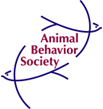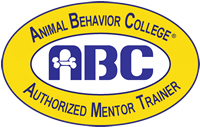I just off the phone with a brilliant colleague and close friend after a long conversation about barking. Why dogs bark, how to stop it, what it means, what tools work and which don’t. She hinted at some great research being done in Hungary and I am eager to get my hands on it. But while I am waiting, I was thinking about this whole barking thing. It’s probably one of the biggest complaints I hear from clients – why does my dog bark and how can I make it stop?!? And I myself have the very unpolitically correct urge to throttle big barkers. It’s just SO IRRITATING. And just like with the Naughty Face experiment, I have an idea that I will test out on one of my dogs. I’m choosing Tally, an uncharacteristically loud border collie. Oh, he whines, honks, barks out of excitement, frustration and sometimes because he startled himself with the sound of his own barking. Yep, Tally will do just fine.
The experiment is shaping silence. Now, I’m sure many of you know about training commands and counter commands (up/down, right/left, open/close) and speak/quiet is a common one. I have to say though, it’s generally an epic fail with my dog training clients. Even really skilled trainers have a hard time reinforcing the absence of behavior. It’s much easier to click or mark something you see – an action – versus the lack of or absence of action – or in this case, noise. So I was just thinking, what if I focus on the discreet behavior of Tally closing his mouth and then keeping it shut. What about that, eh?
I like this idea for a few reasons. One, I don’t have to elicit barking in order to then silence it. I am a big advocate of not practicing unwanted behavior so if I don’t want my dog to bark it doesn’t make sense to get him to practice barking (he’ll only get better because practice makes perfect). And, I don’t know, it just always seems muddy trying to train a dog to speak and then be quiet. Also, I feel like once the dog gets it, keeping his “quiet” position will be no more difficult than holding a stay. I can easily add in duration and distractions. Whether it’s my boarding dogs romping around in flirtatious fits of fun, the cat breaking in to a bag of food and scattering it all over the floor or even a storm crackling outside…there are always plenty of useful distractions over here at Camp PBC!
I would be curious to know what other brilliant efforts have been implemented successfully to stop barking. The first step in ameliorating this behavior is understanding the cause. For a terrified or reactive dog, the goal should not be to worry about the barking but rather to modify the emotions going on. When the animal feels better, the panic barking with dissipate. But with excitement barking, frustration barking, nuisance barking and mindless barking-just-to-bark – well, I’d love to hear people’s ideas about what’s worked for you.
OK, so off we go for session one of KEEP YER TRAP SHUT training! Here is a picture of Tallysen aka Tally aka The Honker.
 Get our monthly newsletter packed full of helpful training tips!
Get our monthly newsletter packed full of helpful training tips! 






